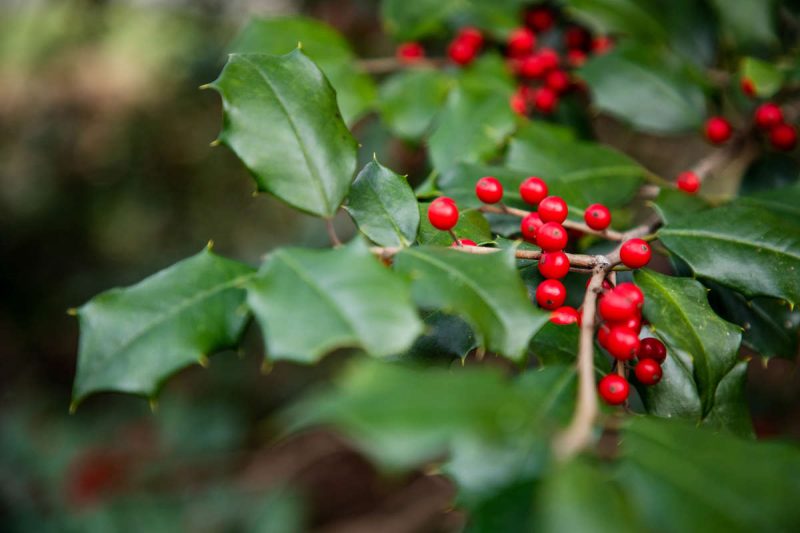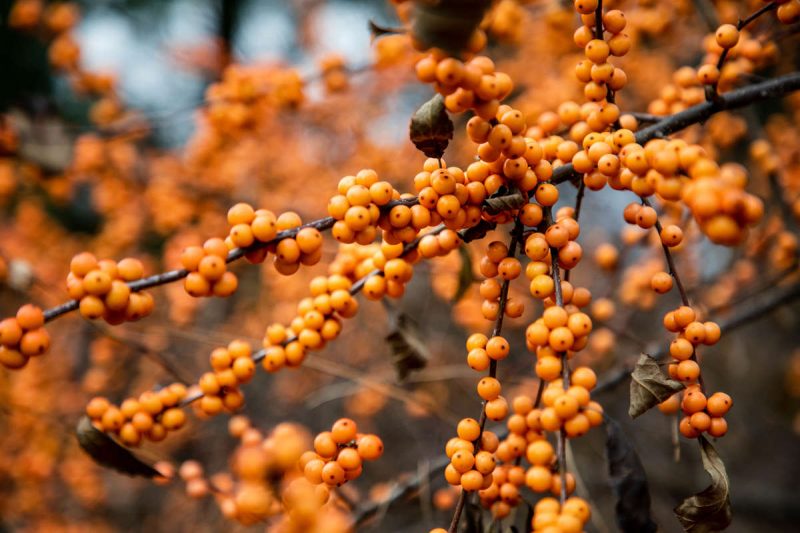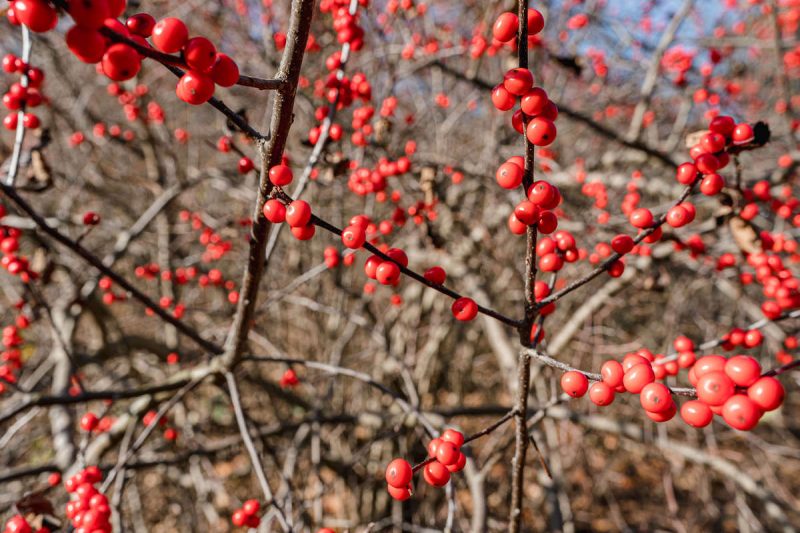All Eyes on Ilex: Highlights from the Holly Collection
Kristine Paulus is the Living Collections Information Manager at The New York Botanical Garden.

Ilex opaca in the Ross Conifer Arboretum
Ilex, the only genus in the family Aquifoliaceae, has a worldwide natural distribution, and is found on every continent but Antarctica. These plants are as diverse as they are widespread, growing in temperate to tropical zones. Fairly easy to grow, they are popular in both arboreta and home gardens, and their colorful fruit and ornamental foliage—frequently evergreen but not always—make them great plants for the winter garden.
Many of the more than 400 species are commonly known as holly. Hollies have a reputation for being evergreen and setting bright-red fruit (berry-like drupes), but there are a number of species that eschew this stereotype. Some plants are deciduous and some produce drupes that are white, yellow, or even orange. While their flowers are inconspicuous, they are often surprisingly fragrant and are quite attractive to bees. It is important to remember when planting hollies that they are dioecious (having separate male and female plants), and female plants need a male plant nearby in order to be pollinated and bear fruit.
Although hollies have year-round garden interest, winter is a great time to check out some of the following highlights from the collections:
- English holly, or Ilex aquifolium, is one of the most easily recognizable species and is what most people picture when they think of holly: glossy, dark green leaves that are wavy and spiny, and bright red drupes. It is also known as European holly. An especially interesting cultivar, ‘Aurea Marginata’, stands out in the Perennial Garden with its striking variegated leaves.
- Many holly species are especially attractive to birds, who are drawn to their bright berries. Ilex verticillata, or common winterberry, produces especially showy fruit, offset by the absence of leaves in winter. Near the entrance to the Native Plant Garden, the cultivar ‘Winter Gold’ becomes flush with bright orange fruit which can persist through the season. These contrast nicely with the profuse fruit of another cultivar nearby, ‘Winter Red’. Carefully arranged cuttings are currently included in the seasonal container plantings at the Visitor Center and other entrances. Note that holly fruit is toxic to humans.

Ilex verticillata ‘Winter Gold’ in the Native Plant Garden
- Another unusual fruit color can be found on the hybrid Ilex × attenuata ‘Longwood Gold’ (also known as golden topel holly), growing across from the Amy and Lilian Goldman Stone Mill. As the name implies, the fruit is a surprising golden hue. The species is a naturally occurring cross between the native I. opaca (American holly) and the slightly less hardy I. cassine (dahoon holly), native from the southern United States to Mexico.
- A group of some of the Garden’s grandest and largest specimens of Ilex opaca can be found in the Arthur and Janet Ross Arboretum, between the Library Building and the Rock Garden. The species is listed as exploitably vulnerable by the state of New York but maintains healthy populations in the rest of its native range (Maine to Florida, west to Illinois and Texas). These evergreen trees have a graceful pyramidal form, are attractive to wildlife, and are valued for their hard wood.
- Ilex pedunculosa (longstalked holly) is an evergreen tree that gets its specific epithet and common name from the bright red drupes dangling from the ends of distinctive two-inch-long stalks, or peduncles. A group of these elegant plants grows across from the Stone Mill.
- Known as Japanese holly or box-leaved holly, Ilex crenata is an interesting, compact evergreen with small leaves that are reminiscent of boxwood. Several cultivars can be found just near the Bedford Park Boulevard entrance and the Stone Mill. I. crenata is frequently used in topiary.

Ilex verticillata in the Home Gardening Center
- Just inside the Mosholu Gate entrance, visitors are greeted by the wide evergreen leaves and bright red fruit of several large specimens of Ilex × altaclerensis, which were grown from seed and accessioned in 1945. It is also known as Highclere holly, as it was developed at Highclere Castle in 1835. It’s a hybrid between I. aquifolium and I. perado.
- Tropical species include Ilex paraguariensis, located in the Upland Rainforest of the Enid A. Haupt Conservatory. One common name is yerba-maté, which is also the name of the caffeinated beverage derived from the plant.
- Osmanthus is a genus of plants that are not hollies, nor in the Aquifoliaceae family, but they are commonly referred to as hollies for their leaves’ resemblance to them. They are in the olive family, Oleaceae, and have opposite leaves, whereas as hollies have alternate leaves. They are known for their highly fragrant flowers that usually bloom in late fall to early winter. A group of Osmanthus heterophyllus ‘Gulftide’ form a hedge just outside the Sensory Garden.
Truly a year-round joy to discover at NYBG, Ilex contains multitudes, a varied genus I encourage you to look for both indoors and out on your next visit to the Garden.
SUBSCRIBE
Enter your email address to subscribe to this blog and receive updates on new posts.











